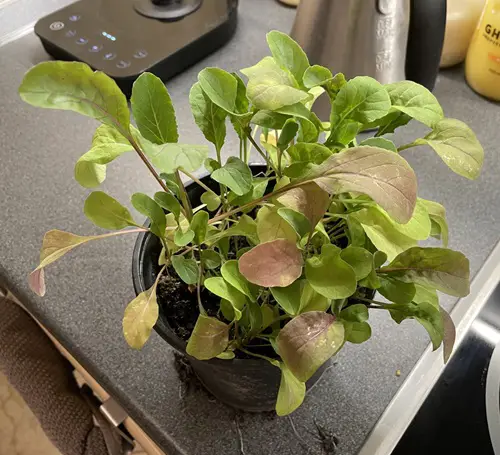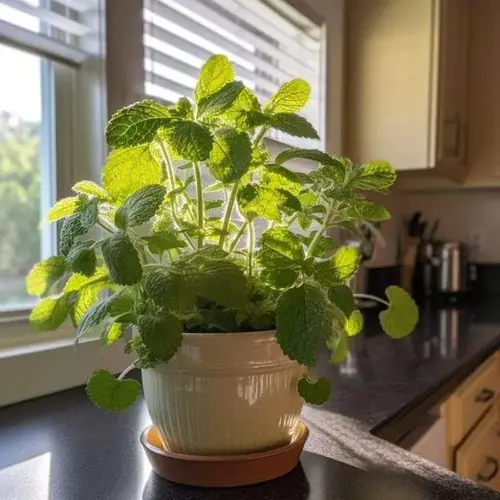Grow these 6 Edible Plants Indoors for an endless supply of fresh organic herbs and vegetables from the comfort of your home!
Herbs and vegetables often need plenty of sunlight and space, which is seldom the case in urban homes and apartments. But we have whipped up a selection of edible plants anyone can grow easily, even in low-lit, compact spaces inside your home. Check it out!
6 Edible Plants Anyone Can Grow Indoors
1. Arugula

Botanical name: Eruca sativa
First up, we have the famous shallow-rooted arugula, popularly known as Rocket. Grow it on a windowsill or a ledge in your kitchen using a long, shallow planter, as it doesn’t need deep soil. While it prefers full sun, this spicy, sharp-flavored mustard family member can tolerate shade, which may even help it prevent bolting in the hottest part of the day.
While it grows slower in less light, it’ll only take about 4-8 weeks to get this plant harvest-ready. When its leaves reach about 3-6 inches long, use them as toppings on your favorite pizzas or simply toss them in some gnocchi!
2. Lettuce

Botanical name: Lactuca sativa
Another plant that goes from seedlings to ready-to-harvest in around a month is the delectable lettuce! Several lettuce varieties are cold-hardy and can bolt quickly in heat and too much sun. Hence, a party-lit spot in your kitchen works well for this beloved salad green.
Start seedlings at 55-65°F, as they prefer lower temperatures. Lettuce thrives in shallow containers with well-drained, moist soil rich in organic matter.
3. Nasturtium

Botanical name: Tropaeolum
Native to South and Central America, these flowering herbs enjoy dappled sunshine from a west or south-facing window but can also grow in partial to full shade. In fact, nasturtiums produce larger leaves in shade to absorb any available sunlight. However, when growing indoors, don’t expect flowers.
It has a peppery taste and is often used in salads, quiches, and stir-fries, as well as to make pesto sauce and nasturtium salt. Nasturtiums thrive in poor to average, slightly acidic, well-drained soil.
4. Celery
Botanical name: Apium graveolens
Cool and crunchy, celery is an easy-to-grow salad vegetable perfect for indoor spaces. This useful herb enjoys morning sunlight. However, with too much heat and light, it will turn bitter. Apt for a kitchen window, plant celery seeds in a shallow but wide container with organic-rich, moist soil, or rather buy a few transplants from a nearby garden center along with some chives to grow in your kitchen windowsill garden.
5. Mint
Botanical name: Mentha
Next on our list of easy edibles to grow at home is the universally loved mint. This refreshing herb grows well in dappled shade, such as a south-facing windowsill. Mint is ideal for pots and containers as it can quickly become invasive and colonize other vegetation in a garden.
However, mint, like several other herbs, does make a compelling companion to some vegetables. Rotate the pot about a quarter turn weekly so that each side of your plant receives enough sunlight.
6. Scallions and Garlic Greens

Botanical name: Allium fistulosum
Also known as green onions, scallions are well-suited to growing indoors. Even with exposure to indirect light, they can thrive. They will grow slower in lesser light, though, which gives you the chance to lengthen the harvest season!
Similarly you can grow garlic greens, and if you do so, don’t miss checking out these growing ideas.
Tips When Growing Edible Plants Indoors
- Since your plants will be growing in partial shade and getting indirect sunlight, water them less than usual, as they tend to retain more moisture indoors. In winter, water only when the soil surface feels dry to the touch.
- Utilize lightweight pots and containers for your windowsill plants so you can move them around depending on where they receive ample sunlight.
- Watch for pests, such as spider mites, as they thrive more in dry indoor air.


